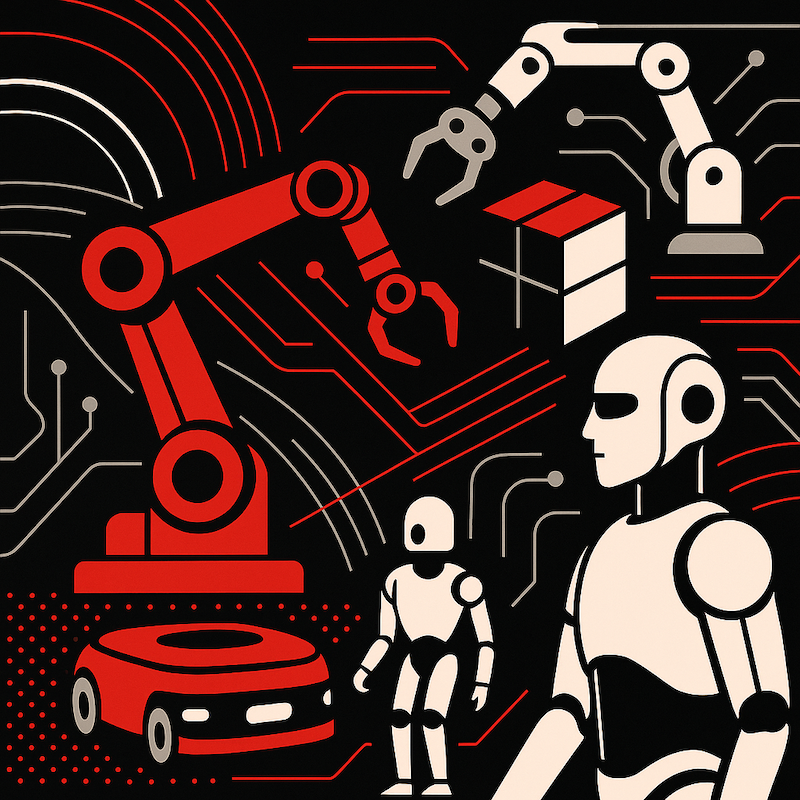Robotics and Automation News brings you a quick look at the latest developments from across the world of intelligent machines and automation.
This edition includes Nike’s new motor-powered “robot shoe”, AutoStore’s latest warehouse innovations, and Nauto’s AI-driven fleet safety system.
Also featured are new breakthroughs in space robotics, industrial safety, and autonomous science. Here are the top stories now on RoboticsAndAutomationNews.com.
Nike’s motor-powered robot shoe
Nike is stepping up its game… with what it calls the world’s first motor-powered running shoe.
The new ACG Robot Shoe uses a hands-free entry and exit system – a motor and drivetrain engage automatically when a sensor detects your foot.
The company says it’s built for all-terrain utility and accessibility, giving users a snug fit without touching a lace or strap.
This marks another step in Nike’s long-term push to merge robotics and wearable design, making performance tech more inclusive.
AutoStore expands warehouse portfolio
Warehouse automation leader AutoStore has unveiled a sweeping new product lineup for Fall 2025.
Headlining the release – AutoCase, which automates the movement of full cases in and out of storage.
The company also launched FlexBins, allowing multiple bin sizes in a single grid – boosting capacity and SKU variety.
For cold-chain clients, there’s a dedicated Frozen-Only Grid, designed for grocery and healthcare logistics.
AutoStore says these upgrades can cut installation costs by up to 35 percent – helping firms handle labour shortages and rising demand.
Nauto CEO: foresight over reaction
Stefan Heck, CEO of Nauto, says accident prevention isn’t about faster reaction – it’s about foresight.
The company’s AI platform analyses driver behaviour and road conditions in real time, predicting risk before an accident happens.
Using on-board computer vision and edge processing, the system issues proactive alerts to help drivers avoid collisions.
Nauto says it’s now analysed more than two billion miles of data from global fleets – and over 300 customers are using the system to make roads safer.
Robots team up for space exploration
Researchers at UNSW Sydney have developed a system that lets robots collaborate autonomously on the Moon and Mars.
A human sets a high-level goal… and the robots handle the rest – dividing up tasks, communicating, and adapting to obstacles on their own.
This technology could allow exploration teams to operate independently, without the lag of Earth-based control.
The system can even recover from a robot failure mid-mission, keeping operations moving in deep space.
Slamcore brings AI safety to forklifts
London-based Slamcore has launched a 3D vision platform that turns forklifts into “safety-aware machines”.
The new product – SightSLAM – uses advanced computer vision to build a live 3D map of warehouse surroundings.
It helps vehicles detect obstacles, workers, and pathways in real time, cutting collision risks in busy facilities.
The company says it can integrate seamlessly into existing hardware – improving safety without expensive overhauls.
Draganfly and Palladyne team up on drone swarms
Drone maker Draganfly is teaming up with Palladyne AI to bring advanced autonomy to aerial fleets.
The partnership will integrate Palladyne’s AI engine into Draganfly’s drones – enabling coordinated swarming and navigation without GPS.
The systems are aimed at defence, logistics, and large-scale search and rescue.
Draganfly says it’s a key step toward next-generation autonomous flight that can operate even in communication dead zones.
RLWRLD joins AWS Generative AI Accelerator
UK-based RLWRLD has been chosen for the AWS Generative AI Accelerator.
The company develops synthetic training data for robotics and automation – using generative AI to simulate millions of realistic environments.
This helps firms train their systems faster and at lower cost, without depending on real-world data collection.
AWS will provide mentorship, cloud credits, and funding to help RLwRLD scale its technology worldwide.
Virginia Tech’s self-driving lab
At Virginia Tech, scientists are taking autonomy into the lab itself.
Their “self-driving lab” combines robotics with AI agents capable of designing and running experiments on their own.
The system can generate hypotheses, plan tests, carry them out, and analyse the results – all autonomously.
Researchers say it could compress years of materials research into just weeks… a breakthrough in agentic science.
Cleaning robots set a new hygiene standard
Cleaning and sanitation robots are no longer luxuries – they’re becoming the backbone of modern hygiene.
Driven by post-pandemic safety standards and labour shortages, robotic scrubbers and UV-C units now ensure consistent, measurable cleanliness.
Hospitals, schools, and retailers are adopting these systems not just for efficiency, but for verifiable proof of hygiene.
Analysts expect the sector to keep growing rapidly – with automation now seen as the standard for public health environments.
Macy’s opens automated fulfilment centre
Retailer Macy’s has opened a massive automated fulfilment centre in Statesville, North Carolina — a key part of its multi-billion-dollar Polaris strategy.
The facility automates everything from sorting to packing, dramatically speeding up online order delivery across the eastern US.
Macy’s says the site embodies its ongoing commitment to modernise logistics and e-commerce infrastructure.
It’s one of the largest investments in warehouse automation ever made by an American retailer.
Airbus and partners form European space alliance
Airbus Defence and Space has joined forces with Leonardo and Thales Alenia Space to create a new European “space giant”.
The alliance will pool expertise across Earth observation, telecoms, and satellite navigation.
The companies say the goal is to boost European independence in space technology and streamline procurement across the bloc.
Analysts view it as a bold step toward unifying Europe’s fragmented aerospace capabilities.

